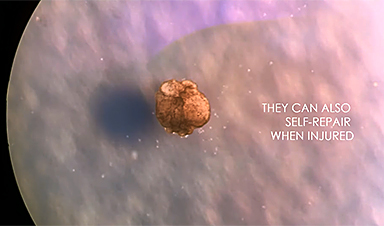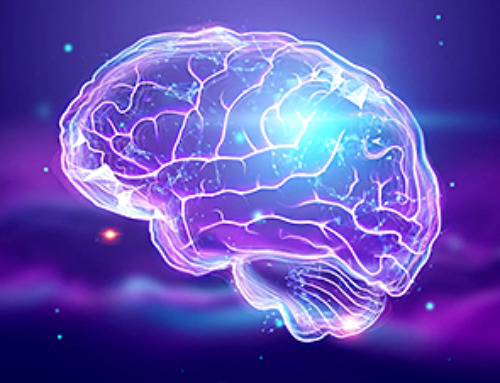‘This is something that’s never been observed before’.
A team of scientists from the University of Vermont (UVM) has discovered a new form of reproduction in computer-designed organisms (CDOs) that they had created earlier. In this new form of replication, these robots ingest single-cell organisms and release “babies” that look and move like them, said a university press release.
Last year, we brought to you the ‘xenobots,’ a new form of life that the scientists had created. The video below is a quick refresher on how they were made from cells from a frog embryo and then modeled to do certain tasks.
After designing these cells, the scientists were able to activate new sensors and motors on them and even produce them faster. But like all living cells, these robots hit a roadblock in death. A few days after they were manufactured, the cells inside the 0.7-mm organisms would begin to die ultimately leading to their death.
After designing these cells, the scientists were able to activate new sensors and motors on them and even produce them faster. But like all living cells, these robots hit a roadblock in death. A few days after they were manufactured, the cells inside the 0.7-mm organisms would begin to die ultimately leading to their death.
So, the team wondered if there was a way they could get the organism itself to reproduce. They posed the question to the Deep Green Supercomputer cluster at the University of Vermont in the form of an evolutionary algorithm. Billions of shapes were tested to determine what would allow these bots to replicate and after months of analysis, the supercomputer came up with a familiar idea: Pac-Man.
So scientists designed ‘parent’ xenobots in the shape of Pac-Man. Inside a petri-dish, these bots could then swim out to individual cells and gather hundreds of them at a time. After staying in parent xenobots’ Pac-Man-like mouths for a few days, these cells transformed into new “baby xenobots” that moved and acted as the parent.
“Then those parents built children, who built grandchildren, who built great-grandchildren, who built great-great-grandchildren,” said Sam Kriegman, the lead author of the study, explaining how the design gave rise to generations of xenobots. “These are frog cells replicating in a way that is very different from how frogs do it. No animal or plant known to science replicates in this way,” he added.
“People have thought for quite a long time that we’ve worked out all the ways that life can reproduce or replicate. But this is something that’s never been observed before,” said Douglas Blackiston, a scientist at Tufts University who assembled the ‘parent’ xenobots and is also a co-author of the study, published today in Proceedings of the National Academy of Sciences.
Professor Josh Bongard who leads the xenobot research at UVM said that understanding these systems will open doors to many new technological developments. Citing the timeline for the development of the COVID-19 vaccine, Bongard called it “exceedingly long” and said that using his research in the future, we could direct AI to make a biological tool that does specific functions for us.
News
Nanocrystals Carrying Radioisotopes Offer New Hope for Cancer Treatment
The Science Scientists have developed tiny nanocrystal particles made up of isotopes of the elements lanthanum, vanadium, and oxygen for use in treating cancer. These crystals are smaller than many microbes and can carry isotopes of [...]
New Once-a-Week Shot Promises Life-Changing Relief for Parkinson’s Patients
A once-a-week shot from Australian scientists could spare people with Parkinson’s the grind of taking pills several times a day. The tiny, biodegradable gel sits under the skin and releases steady doses of two [...]
Weekly injectable drug offers hope for Parkinson’s patients
A new weekly injectable drug could transform the lives of more than eight million people living with Parkinson's disease, potentially replacing the need for multiple daily tablets. Scientists from the University of South Australia [...]
Most Plastic in the Ocean Is Invisible—And Deadly
Nanoplastics—particles smaller than a human hair—can pass through cell walls and enter the food web. New research suggest 27 million metric tons of nanoplastics are spread across just the top layer of the North [...]
Repurposed drugs could calm the immune system’s response to nanomedicine
An international study led by researchers at the University of Colorado Anschutz Medical Campus has identified a promising strategy to enhance the safety of nanomedicines, advanced therapies often used in cancer and vaccine treatments, [...]
Nano-Enhanced Hydrogel Strategies for Cartilage Repair
A recent article in Engineering describes the development of a protein-based nanocomposite hydrogel designed to deliver two therapeutic agents—dexamethasone (Dex) and kartogenin (KGN)—to support cartilage repair. The hydrogel is engineered to modulate immune responses and promote [...]
New Cancer Drug Blocks Tumors Without Debilitating Side Effects
A new drug targets RAS-PI3Kα pathways without harmful side effects. It was developed using high-performance computing and AI. A new cancer drug candidate, developed through a collaboration between Lawrence Livermore National Laboratory (LLNL), BridgeBio Oncology [...]
Scientists Are Pretty Close to Replicating the First Thing That Ever Lived
For 400 million years, a leading hypothesis claims, Earth was an “RNA World,” meaning that life must’ve first replicated from RNA before the arrival of proteins and DNA. Unfortunately, scientists have failed to find [...]
Why ‘Peniaphobia’ Is Exploding Among Young People (And Why We Should Be Concerned)
An insidious illness is taking hold among a growing proportion of young people. Little known to the general public, peniaphobia—the fear of becoming poor—is gaining ground among teens and young adults. Discover the causes [...]
Team finds flawed data in recent study relevant to coronavirus antiviral development
The COVID pandemic illustrated how urgently we need antiviral medications capable of treating coronavirus infections. To aid this effort, researchers quickly homed in on part of SARS-CoV-2's molecular structure known as the NiRAN domain—an [...]
Drug-Coated Neural Implants Reduce Immune Rejection
Summary: A new study shows that coating neural prosthetic implants with the anti-inflammatory drug dexamethasone helps reduce the body’s immune response and scar tissue formation. This strategy enhances the long-term performance and stability of electrodes [...]
Scientists discover cancer-fighting bacteria that ‘soak up’ forever chemicals in the body
A family of healthy bacteria may help 'soak up' toxic forever chemicals in the body, warding off their cancerous effects. Forever chemicals, also known as PFAS (per- and polyfluoroalkyl substances), are toxic chemicals that [...]
Johns Hopkins Researchers Uncover a New Way To Kill Cancer Cells
A new study reveals that blocking ribosomal RNA production rewires cancer cell behavior and could help treat genetically unstable tumors. Researchers at the Johns Hopkins Kimmel Cancer Center and the Department of Radiation Oncology and Molecular [...]
AI matches doctors in mapping lung tumors for radiation therapy
In radiation therapy, precision can save lives. Oncologists must carefully map the size and location of a tumor before delivering high-dose radiation to destroy cancer cells while sparing healthy tissue. But this process, called [...]
Scientists Finally “See” Key Protein That Controls Inflammation
Researchers used advanced microscopy to uncover important protein structures. For the first time, two important protein structures in the human body are being visualized, thanks in part to cutting-edge technology at the University of [...]
AI tool detects 9 types of dementia from a single brain scan
Mayo Clinic researchers have developed a new artificial intelligence (AI) tool that helps clinicians identify brain activity patterns linked to nine types of dementia, including Alzheimer's disease, using a single, widely available scan—a transformative [...]





















